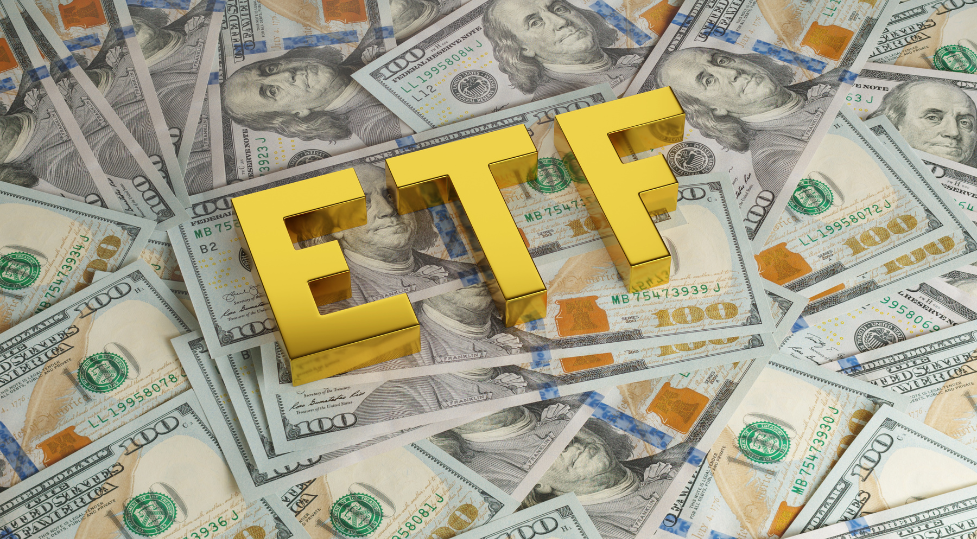Exchange-traded funds (ETFs) are not slowing down. Zachary Evens, manager research analyst at Morningstar, is clear about this. And for good reason, as firms are launching new ETFs every day; investment flows continue to pour into these vehicles, and both investors and providers “are beginning to venture into previously unexplored territories.”
ETFs attracted $540 billion in new investment during the first six months of 2025, surpassing the total subscriptions of the first half of 2024, as the expert recalls.
Regarding products, by June of this year, 464 new ETFs had already been launched, quickly approaching the annual record of 726 launches. Among the most notable are the first public-private credit ETF, countless new buffer ETFs, covered call and active options ETFs, cryptocurrency ETFs, and even money market ETFs.
Faced with this dizzying array of figures in the industry, Evens takes stock: reviewing some of these developments and revisiting his predictions about ETFs made earlier this year. “So far, so good, but there’s surely much more to come in what has already been a hectic 2025 for ETFs,” he asserts.
Prediction 1: Active ETFs Outnumber Passive ETFs
This was inevitable. And it didn’t take long to happen. By the end of June, there were 2,226 active ETFs and 2,157 passive ETFs available to U.S. investors. Asset managers have fully embraced this tax-efficient instrument, meeting the demand of investors who continue to pour money into this sector.
However, there are nuances in the active ETF story: some of the most popular active ETFs are not so popular, Evens points out. Most of those that have taken off so far follow a quantitative or rules-based strategy. They are labeled “active” because they do not track an index. Examples include options-based strategies, such as defined outcome or covered call ETFs, or diversified quantitative strategies.
“Active ETFs are booming, but for now, most of the growth and interest have been centered on these types of strategies. It is likely that rules-based ETFs will continue to lead the charge in active ETFs,” the expert states.
Story 1: Private Assets ETFs
A significant trend in ETFs, according to the expert, is investment in private markets. Apollo has partnered with State Street to bring private credit to the retail market, and Vanguard is working with Wellington and Blackstone on the same—though Vanguard currently lacks a widely available public-private offering.
State Street‘s ETF, SPDR SSGA IG Public & Private Credit ETF (PRIV), was the first to hit the market in February this year. The launch was not entirely smooth, and doubts remain about the viability of illiquid assets in a liquid wrapper. But according to industry opinions, “more public-private products are clearly on the horizon.”
Investment inflows into the SPDR SSGA IG Public & Private Credit ETF have been moderate so far, but picked up in early July, “so it will be interesting to see how quickly competitors enter the market and how investors respond to this nascent segment.”
Prediction 2: Vanguard’s VOO Surpasses State Street’s SPY as the World’s Largest ETF
In 2025, the Vanguard S&P 500 (VOO) took only seven weeks to surpass SPDR S&P 500 Trust (SPY) as the world’s largest ETF. Vanguard’s fund started the year $40 billion behind SPDR’s, but now holds a $46 billion lead.
The expert believes the next question is whether the iShares Core S&P 500 (IVV) will surpass the SPDR S&P 500 Trust by the end of the year: it’s a very low-cost fund that isn’t structured as a trust. “After starting 2025 with a $38 billion gap compared to SPDR S&P 500 ETF Trust, the iShares Core S&P 500 ETF narrowed the gap to $14 billion by mid-year. This could be the tight race to watch,” he argues.
Story 2: Cryptocurrency ETFs
The fastest-growing ETF in history is the iShares Bitcoin Trust ETF (IBIT). Its assets have grown to over $75 billion after just a year and a half on the market. Its strong performance, crypto-friendly regulation, and adoption in model portfolios have helped this ETF reach its current level, the expert explains. But other cryptocurrency ETFs are also making headlines.
The Morningstar digital assets category has grown from $28 billion and 43 ETFs just two years ago to over $150 billion in 106 ETFs by the end of June 2025. However, this rapid growth “comes with froth,” and recent cryptocurrency ETF filings are drawing attention. Among the applications are several memecoin ETFs, including one that tracks the price of Pudgy Penguin NFTs.
“Bitcoin ETFs are here to stay, but time will test the resilience of the newcomers to the digital assets category,” concludes Evens.
Prediction 3: ETF Share Classes Become Reality
ETF share classes are on the verge of becoming a reality. They haven’t been approved yet, but Evens predicts this situation should change in the second half of this year. At the time of writing, 70 firms have applied for a Vanguard-style hybrid share class.
Firms are eager to offer this share class. However, Lan Anh Tran, manager research analyst at Morningstar, noted in her prediction that “once approved, they might not be the lifeline many expected” and that the share class “could create more problems than it solves.” Tran cites capacity constraints, SEC best interest regulation concerns, and capital gains complexities as reasons.
Nonetheless, ETF share classes could be a positive development for investors under the right circumstances. And until they are approved and launched, we won’t know their impact on each fund.
Story 3: Outcome ETFs Gain Ground
Following several proprietary launches in this area, BlackRock predicted in March that assets in outcome ETFs would grow to $650 billion by 2030. Outcome ETFs, as defined by BlackRock, include covered call ETFs, buffer ETFs, and some others. All of them use options to deliver a specific outcome.
Covered call ETFs fall under the derivative income category. These vehicles typically sell call options against a long position in an underlying asset, such as the S&P 500 index, to generate income. The largest ETF in the category—and currently the largest active ETF—is the JPMorgan Equity Premium Income ETF (JEPI), which contributed to the category’s boom and demonstrates that the prudent use of options can be an effective way to restructure risk and generate income, as Evens points out. By the end of June, there were 155 ETFs with $130 billion in the derivative income category.
Regarding covered call ETFs on individual stocks, Evens explains that their sky-high yields attracted billions in inflows, “but funds like these often end up on our list of ‘worst new ETFs of the year’ for sacrificing total returns in favor of income while increasing risk and costs.”
Buffer ETFs are the most explicit outcome-based strategy, offering investors a defined range of both losses and gains. Several firms even offer ETFs with 100% downside protection: they should not lose money before fees, but only gain up to a maximum cap, usually between 8% and 10% annually.
The defined outcome category, which houses buffer ETFs, has evolved from a simple buffering strategy to much more complex products in just a few years. This new category now holds nearly $70 billion in assets spread across 408 ETFs, “the largest of all categories.”
Defined outcome and derivative income are among the fastest-growing categories, thanks to ETFs. “It is clear there is investor interest, and issuers have been more than willing to offer new products. However, ETFs in these fastest-growing categories remain quite expensive compared to traditional index funds and even many actively managed ETFs. There is room for costs to come down as the sector matures,” Evens asserts.




